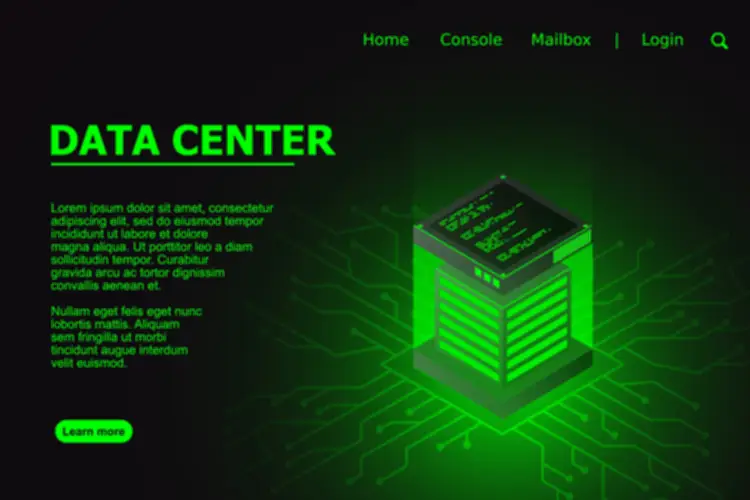Its flexibility, performance, and intensive ecosystem make it a compelling alternative for a broad range https://www.globalcloudteam.com/ of growth projects, from small-scale functions to enterprise-grade options. As we delve deeper into this comparison, we’ll discover how .NET Core stacks up towards its predecessor, .NET Framework, in numerous elements to help you decide which framework most intently fits your needs. Since 2002, .NET Framework has been broadly adopted for developing a wide range of purposes, from desktop software to web purposes and companies. All these platforms will implement .NET Standards – a common set of APIs that replace moveable class libraries (PCLs). This ensures code sharing throughout desktop applications, cellular apps, cell games and cloud services. It will integrate with other Microsoft technologies and embrace open-source improvement.
Web Core Vs Internet Framework: Detailed Comparison
In addition, the state of Mono improvement What is .NET Core was normally not so aligned with the present state of the .NET Framework. This actually created some friction with the true portability of .NET functions to Linux. So while it’d look like a advertising trick to easily drop the ‘Core’ branding, the long-term plan from Microsoft is emigrate its consumer base in the path of .NET 6 and any newer versions which have but to be launched. I hope that this article has helped you understand the differences between these three platforms and make an informed determination about when and tips on how to migrate to use on your tasks. Generally, it’s used to construct Windows desktop and large-scale enterprise purposes utilizing .NET workflow and data connection instruments.
Internet Core Vs Internet Framework What’s The Difference? (
Founded in 2000, we create award-winning transformative digital products & platforms for startups and enterprises worldwide. Deployment of .NET Framework functions typically requires installing the framework on the goal machine. This dependency on the framework might introduce extra considerations for managing and updating the framework on the goal methods. As Microsoft continues to unify the .NET ecosystem with .NET 5 and beyond, transitioning to the fashionable, forward-looking framework provides larger assurance of future-proofing and alignment with Microsoft’s long-term roadmap. This strategic shift underscores the significance of embracing innovation, flexibility, and community-driven development to remain competitive in right now’s fast-paced technology panorama.
- But an enormous quantity of code runs on it, so you cannot consider it a dead framework yet.
- On the opposite hand, .NET Core is used to create server functions that run on Windows, Linux and Mac.
- As per the above image, you possibly can see all three frameworks have their base class libraries.
- Understanding the variations between .NET Framework and .NET Core, you’ll uncover how .NET Core offers a versatile, scalable, and future-ready strategy to utility improvement.
To Start With Was The Internet Framework

Microsoft guarantees that Xamarin is one of the best ways to create a user interface (UI) and optimize performance in apps on multiple platforms. This is necessary today when apps need to run on no less than iOS and Android units. The .NET Standard library is meant to be obtainable on all .NET runtimes.
Net Core Vs Web Framework: Key Variations, Features, And More

It is appropriate with numerous working systems — Windows, Linux, and Mac OS as it is cross-platform. Our skilled .Net developers have worked on projects like Frontrush, offering tailored options for various enterprise challenges. By growing cloud-first software solutions, Net Solutions allows companies to boost their flexibility, responsiveness to market demands, and talent to meet buyer expectations. We provide providers to design, build, and handle Azure cloud computing initiatives, specializing in enhancing worker collaboration, facilitating remote work, making certain pc backups, and managing gadgets.
Internet Core Vs Web Framework: Tips On How To Decide A Net Runtime For An Utility
The answer to this question is dependent upon the project requirement, and what our project calls for so here are some points that we now have to contemplate to determine on best for our project out of the .NET Framework and .NET Core. It’s essential to at all times have a good APM in place on your .NET utility. This is done simply in Visual Studio with a “Target Framework” command and recompiling the projects. Overall Core and Framework are pretty much the identical, but in follow they do have some slight variations. Both .NET Core and .NET Framework use the identical API, known as the .NET Standard, however Core is open-source, whereas Framework is Microsoft’s Windows-only implementation.


Pranaya Rout has published greater than 3,000 articles in his 11-year career. In the case of .Net Framework, when the up to date model is launched it’s first deployed on the Internet Information Server solely. However, .NET 5 just isn’t a formal specification however an precise implementation. But, as it happens in on a regular basis life, the past has a great influence on the present and likewise on the longer term. To perceive at present’s and future .NET, you want to take a step back and hint its history, a minimal of in broad strokes. A information for understanding the variations between .NET, .NET Core, .NET Framework, .NET Standard, etc. by exploring the historical past of the platform.
Q1: Is The Net Core Changing The Internet Framework?
Based on the security we will completely belief .Net Framework which offers us safety service in opposition to .Net core which doesn’t. So from right here, we have a crystal clear concept concerning the information, the distinction, and the benefits of .Net Core and .Net Framework. So by now, we have a good idea and understanding of .Net Core and .Net Framework. The .Net Core is a cross-platform which can be utilized in creating, designing, and developing varied applications with Windows, Mac OS, and Linux. It may be used in designing, coding, and executing a variety of purposes or software which can embrace desktop, cellular, machine learning, online, microservices, video games, IoT, and so on. For new tasks requiring cross-platform compatibility, scalability, and modern development practices, .NET Core or its successor, corresponding to .NET 5 and beyond, is really helpful.
It offers a comprehensive and constant programming mannequin for creating a variety of applications, including desktop applications, internet applications, and providers. Yes, .NET Core is well-suited for performance-critical applications, because of its optimized runtime, modular architecture, and assist for modern growth practices. Its performance optimizations make it ideal for cloud-native architectures, microservices, and scalable applications. Yes, .NET Framework remains a viable alternative for Windows-specific applications, particularly these leveraging Windows APIs and features. Overall, .NET Core represents a modern, versatile framework that empowers builders to construct high-performance, cross-platform applications with ease.
In different words, a library developer has one other potential pain level for the portability of their library. It was the primary try and port the Mono framework (that is, the Linux implementation of the .NET Framework) to iOS and Android. In a few years, the MonoTouch project grew to become the muse for Xamarin, the framework for constructing Android and iOS apps with C# (2013). However, not every little thing in the .NET Framework might be ported to Mono as a result of some strict dependencies on Windows.
Despite being the older sibling, there are scenarios when .NET Framework will be the more wise choice than its youthful brother, .NET Core. And curiously, Microsoft made the supply code for .NET Core obtainable underneath the MIT License, while .NET Core itself is free to download and use. If the .Net commonplace has a higher model then more APIs/inbuilt libraries like “System.
And once again, modularity and containerization assist make it super straightforward to leverage cloud services and scale microservices applications in a cloud-native surroundings with .NET Core. Thanks to its cross-platform assist, lightweight codebase, modularity, and cloud-native interoperability, .NET Core is a logical selection if you’re working with microservices or plan on using Docker containers. The .NET framework also takes a ‘full batteries included’ approach, as it contains an in depth class library known as the Base Class Library (BCL), which supplies an unlimited assortment of reusable types and components. This presents huge functionality, including file I/O, networking, database entry, cryptography, and UI improvement.
Just select your preferred language, write your code, and construct for multiple platforms from a single codebase. When .NET Framework was released in 2002, net development was vastly essential, but cloud services and microservices weren’t anywhere near as dominant as they are now. Also, Windows was still the primary OS targeted by developers of enterprise apps. Explore the differences between .NET Framework, .NET Standard, and .NET Core.

